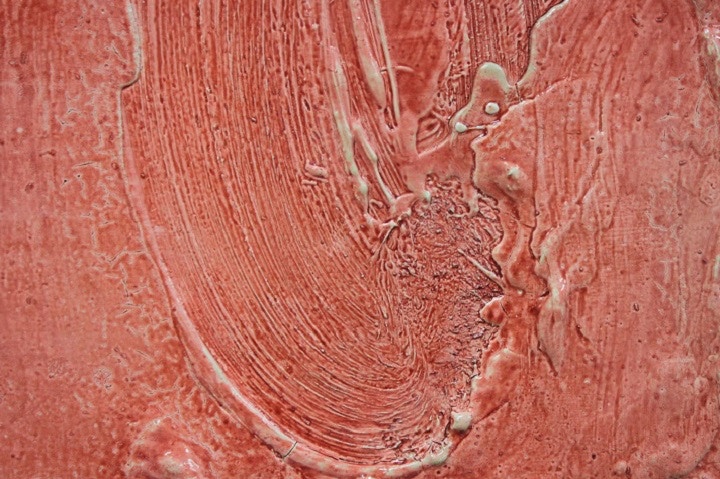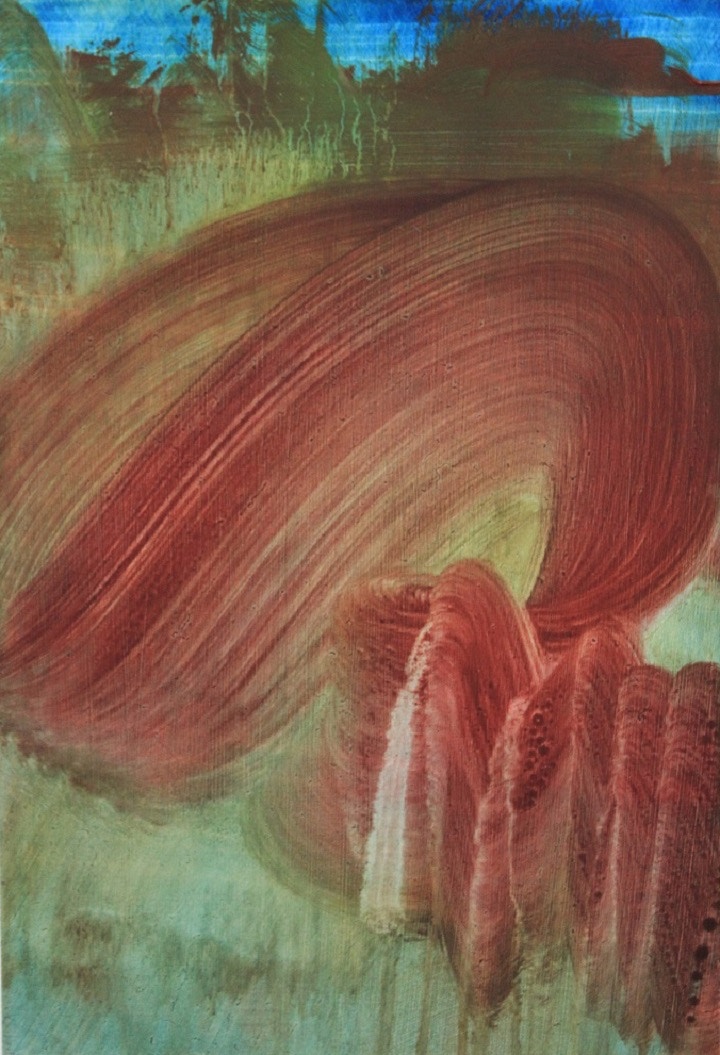Artist Interview: Exploring Gestural Painting with Ollie Guyon
Posted by Cass Art on 3rd Jun 2018
A Painting student at Bath Spa University, Ollie Guyon is already gaining a reputation as an artist to watch out for. Our Cass Art Student Ambassador, Anna Kenneally, catches up with Ollie to discuss the main themes explored in his work and his passion for oil painting.
The process and act of painting appears to be very important. Can you explain this?
Painting for me is a balance of additions and subtractions, application and removal. I aim to simplify landscape into a language of paint, describing its conventions in terms of gesture. I consider relationships between nature and surface, with regards to Post-Modernist ideas about different models of what painting can be. Paintings can evoke private memories of a place or time that are personal to me and working from memory enables me to explore the gap between image and archetype. My work sources the external world in terms of paint, gesture and pigment.
How do you plan your pieces?
Many subjects in paintings start out as diagrammatic sketches of landscapes. I then translate these into small gestural paintings and use a grid system to divide up the paintings into six equal tiles. I select individual tiles from paintings that I consider appropriate, and scale them up to 1.3 metre square areas. Each tile is used only as a rough guide to provide information about form and colour in relationship to landscape. They often take on forms of their own, to generate purer abstractions.
Working from scaled up cross sections of paintings means that I use large brushes. This gives the illusion of magnified paintings and allows for the viewer to observe the nature of the paint.
What surface do you tend to work on?
Preparation of painting surface is the timeliest element to my practice. In order to achieve the best quality finish, surfaces have to be rid of any imperfections, and time is spent priming layers of rabbit skin glue and slow drying oil based primer. The actual painting element is a much quicker process as I like to work wet in wet in order to achieve the effect that I am after. The main constraints with painting is the time it takes for material to dry.
Why do you choose to work in oil paint? Do you have a favourite brand of paint to work with?
The potential of what can be done with oils is far greater than any other medium. They can hold more pigment than any other type of paint and you can regulate the drying time very well. Oil painting is attached to such a rich history with regards to traditional painting, and it is important for me to retain such values. The process of making becomes almost a spiritual act for me, which I feel enhances the overall material quality and finish. I mainly paint with Old Holland Oils.
Who are the main visual artists that influence your practice?
A few examples of artists, practitioners and philosophers that influence my work are Howard Hodgkin, Gerhard Richter, Willem de Kooning, Ian McKeever, James Elkins, and Clement Greenberg.
Where do you see your practice going in the future? Would you like to work in a new medium?
I am exploring the potential that painting has to be considered as sculpture. I’m currently experimenting with home-made gesso and grounds and mulling my own paint, hoping it will create an interesting conversation with my traditionally flatter works.
Feeling Inspired?
Explore more of Ollie Guyon’s work




